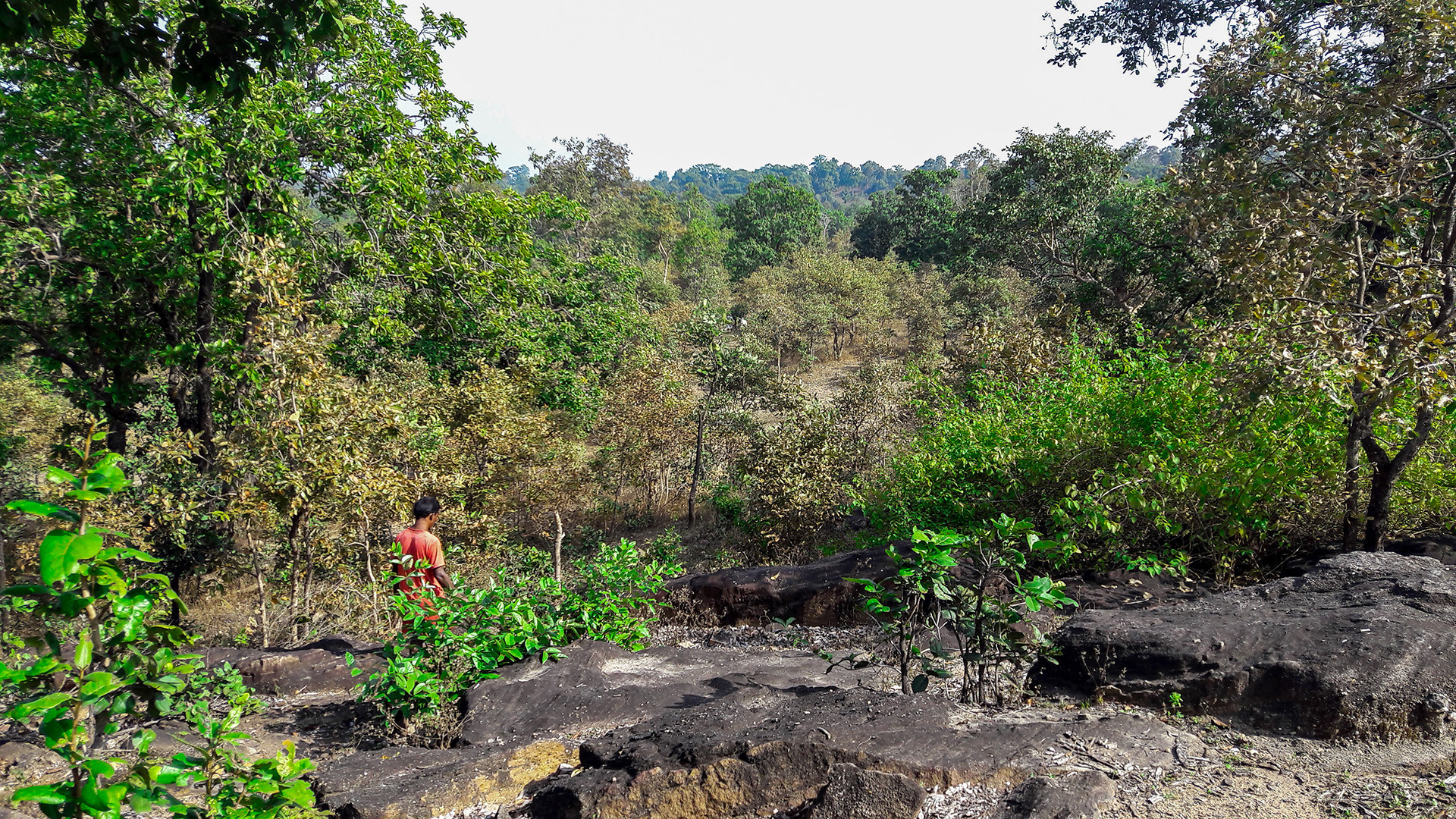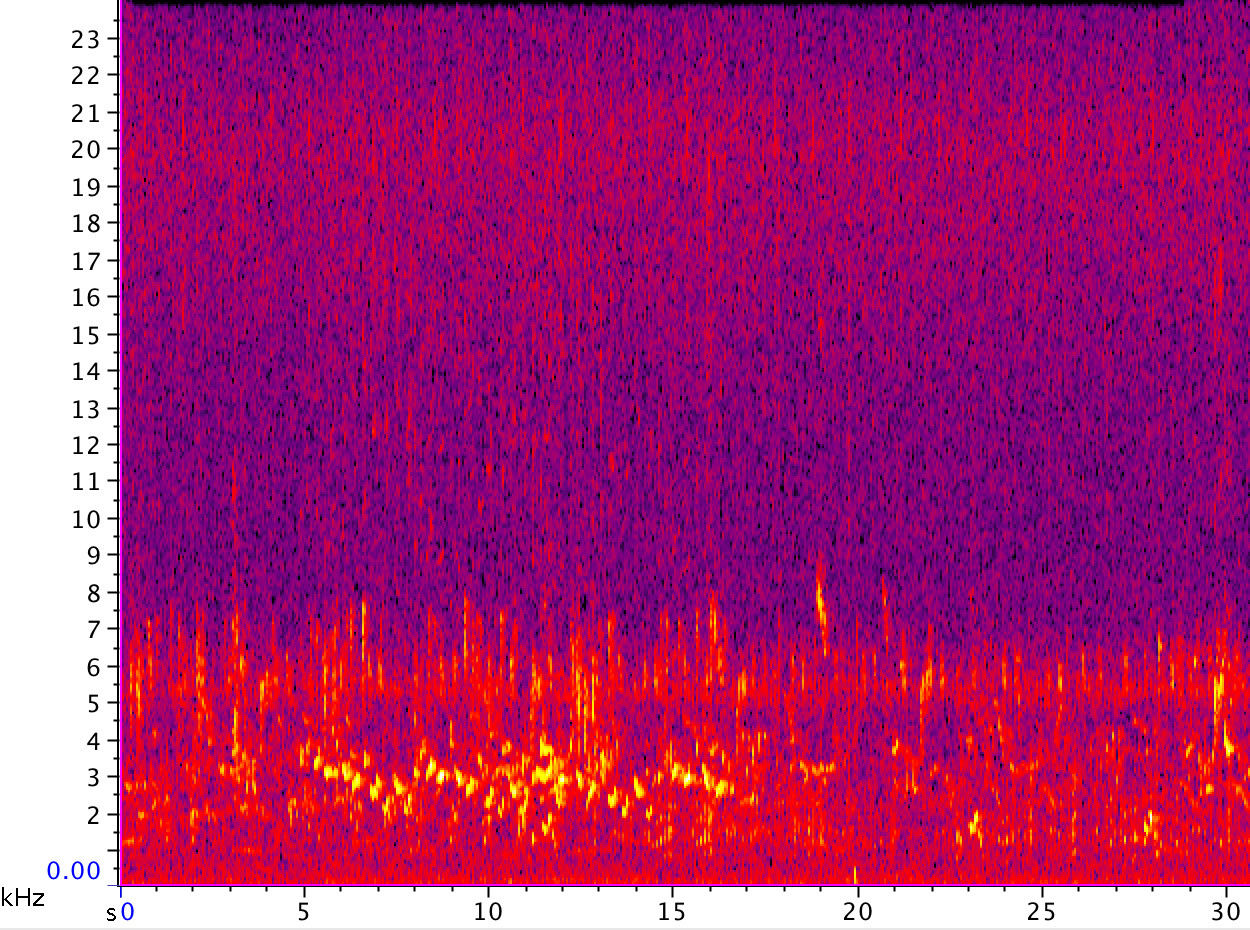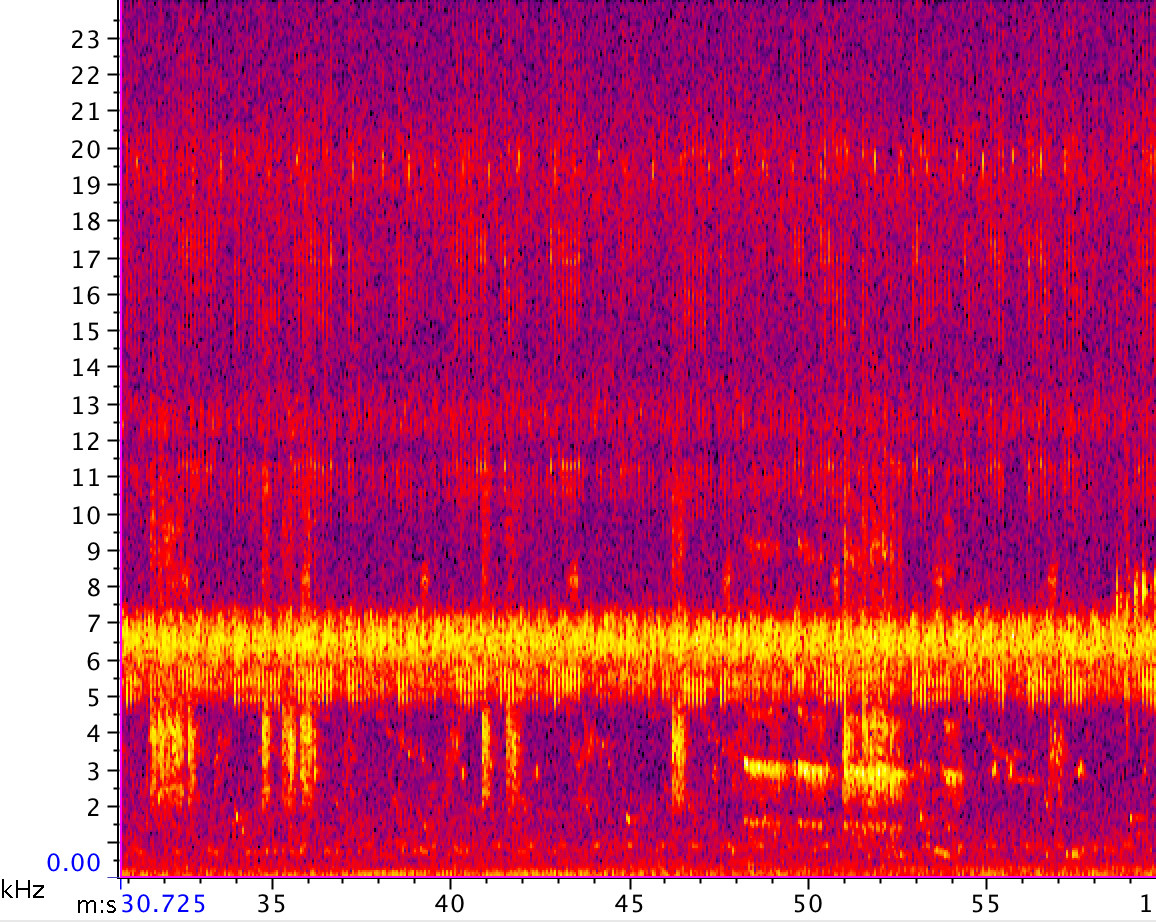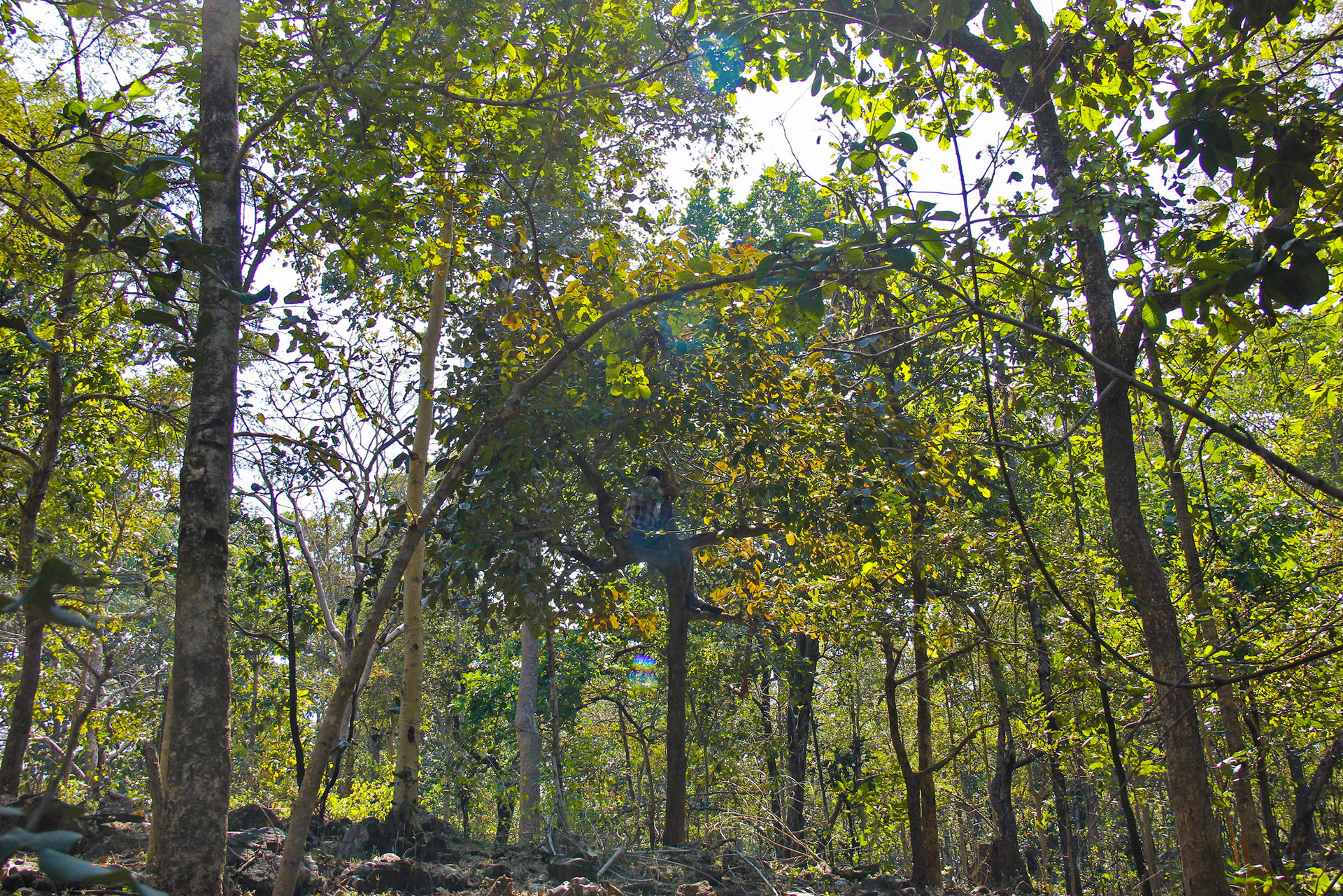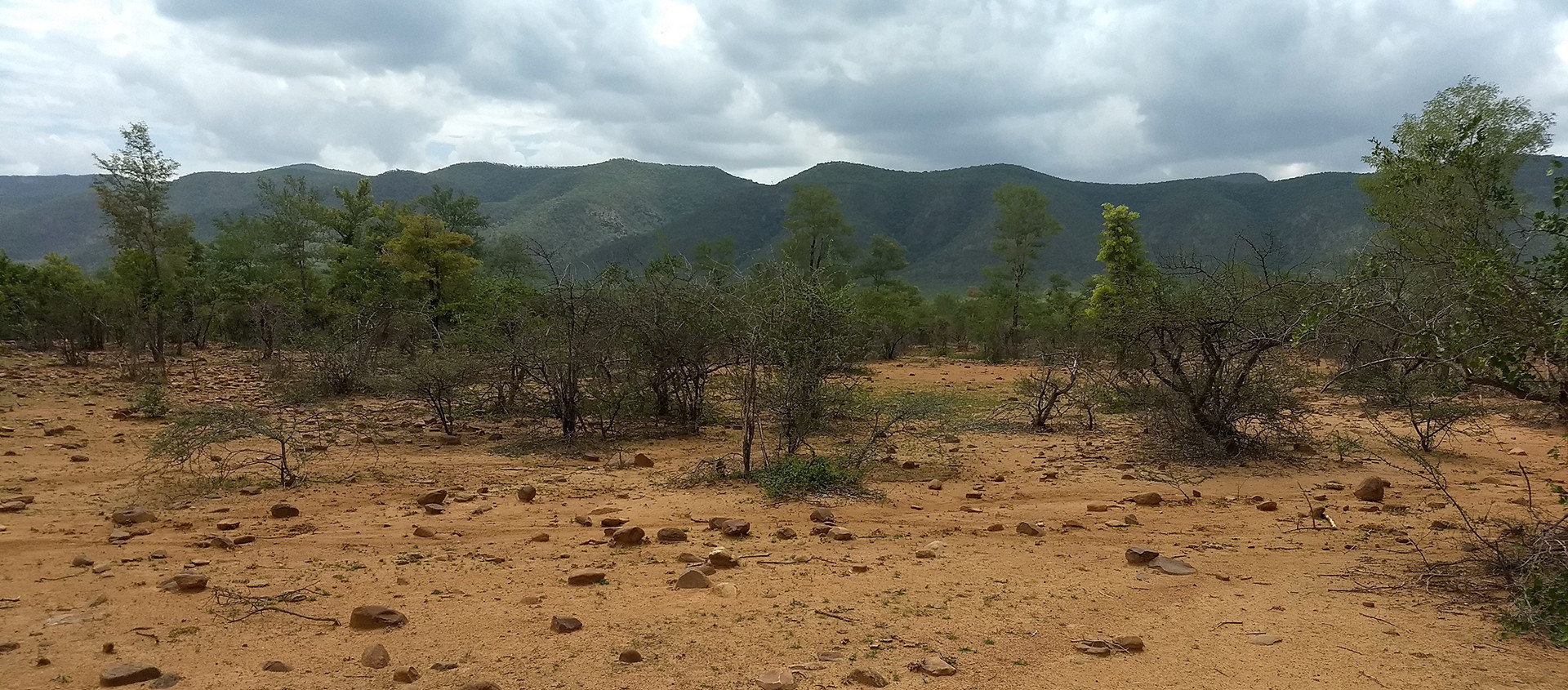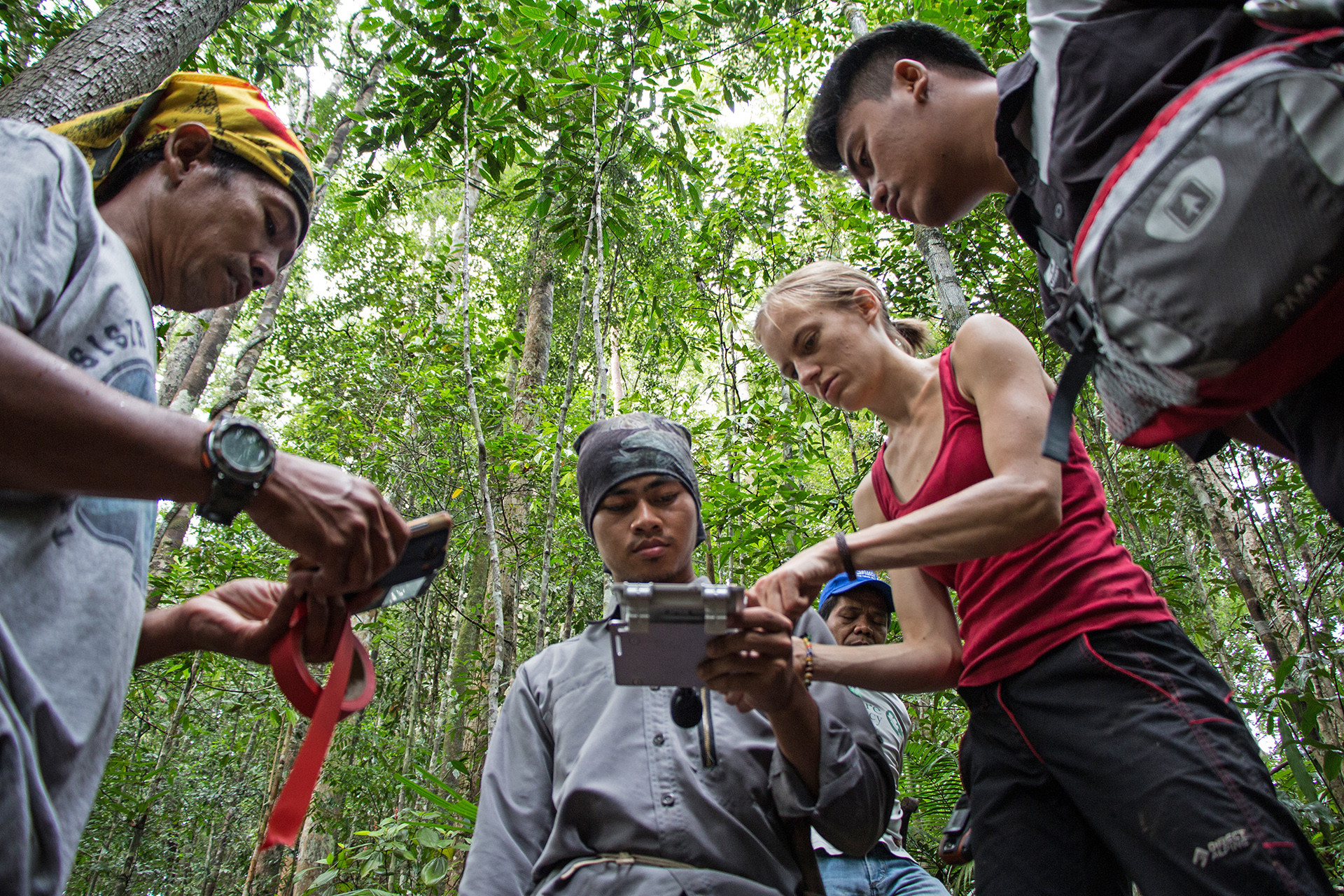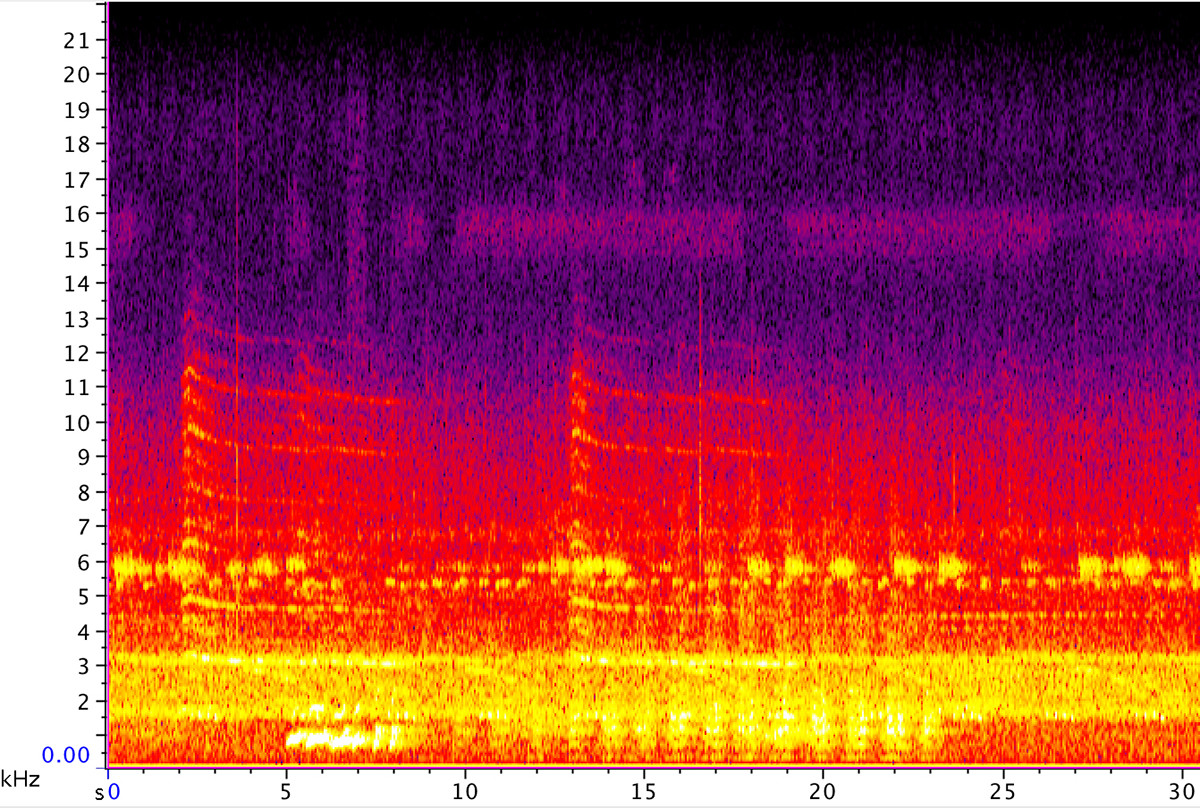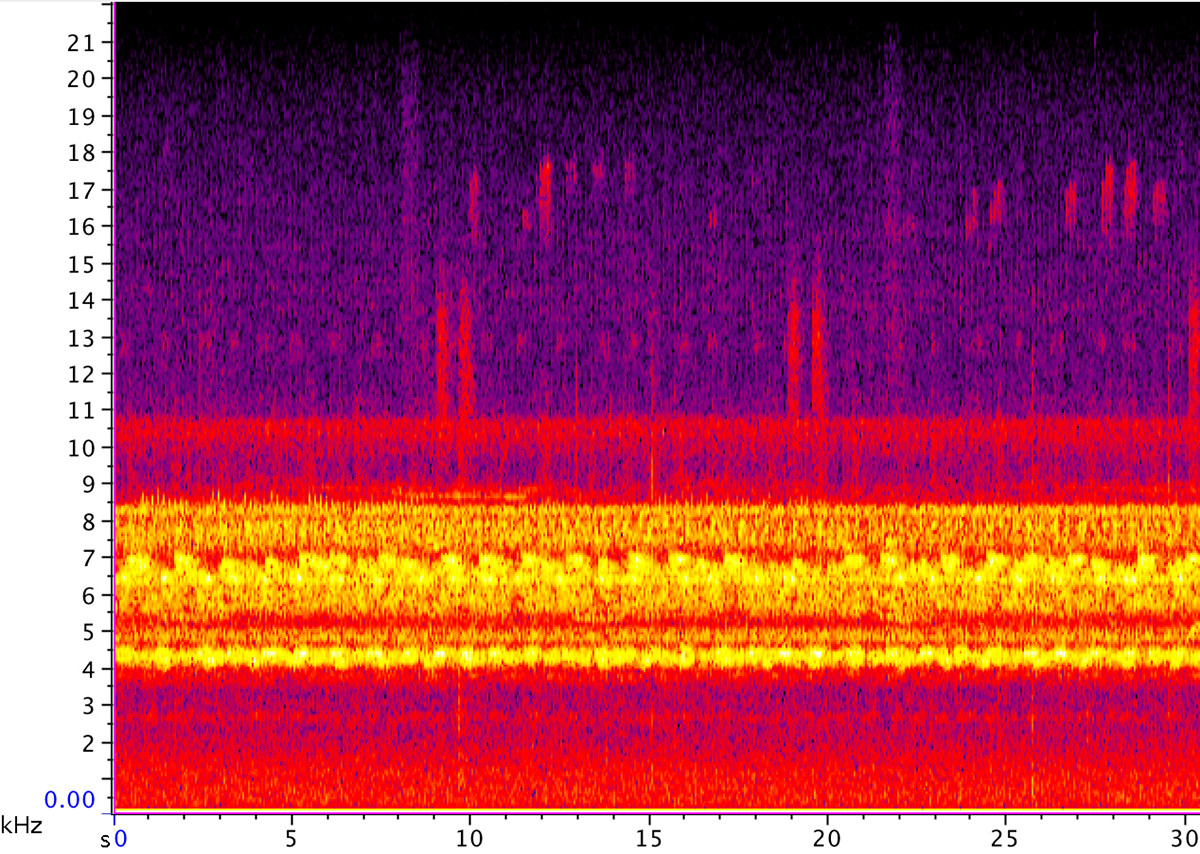The crickets sing their last few notes as the day breaks. A Spotted Owlet screeches from a distance. Coo- koo- coo- coo, an Indian Cuckoo announces the arrival of dawn. Tui- tui- tui, comes the low-pitched whistle of a Common Iora ready to start its day. A Black-naped Monarch calls sharply from a bamboo cluster. The loud cackle of jungle babblers cannot be missed. Not a leaf has moved on any tree in sight, yet the forest is wide awake with its ensemble of birds and insects. As the dawn chorus continues, I climb up a large lendia (Lagerstroemia parviflora) and tie a passive acoustic recording unit to a branch. I’ll be leaving this recorder tied up for a week, recording vocalising birds, insects and mammals. These recordings will help understand the relationship between a community of vocalising species and the regeneration of a forest following the removal of a shrub.
Species vocalise for several reasons: to find a mate, to warn competitors of their territory or even to entertain themselves with no specific biological gain in mind. Each organism’s acoustic signature contributes to the creation of a symphony, a soundscape for an entire ecological system. A unique compilation of complex acoustic signals of creatures large and small, a soundscape gives every landscape its individuality. R. Murray Schafer, the biologist who coined the term soundscape, hoped this term would capture the ‘sonic fabric’ of an environment.
Ironically, in the scientific world, bioacoustic data is often studied with the aid of a visual, a spectrogram. A spectrogram is a graph of a soundscape, or a specific range of frequencies of interest, plotted as a function of time (spectrogram below). Only a narrow range of frequencies is audible to the human ear. However, species vocalise at extremely high and low frequencies, which are inaudible to us. Bernie Krause, a pioneer of soundscape ecology, has trudged through the depths of rainforests and oceans wielding a microphone and a sound amplifier to record the sound of every living organism, even microscopic ones. Species we would never be able to hear unaided, like anemones and shrimp, or the giraffe, which vocalises at extremely low frequencies make themselves known on a spectrogram. If it weren’t for a visual representation of their acoustic signature, we probably would have missed their fascinating low-pitched humming.
Parts of the whole
A canvas painted with the swipes, dots, lines, and squiggles made by the vocalisations of each species, a spectrogram then is no less than an artist’s work. Only the artists, in this case, are critters you could barely see, mammals hanging out high up in the canopy, and birds that swoosh by before you can even catch a glimpse of them. These species, while unseen by us when in a forest, light up a spectrogram with their calls. As we admire this grand cacophony of the natural world, one only wonders how every species trying to convey their message is heard over their fellow denizens. Krause, with his decades of research in soundscape ecology, has an idea how.
Species partition resources in the natural world and carve out their ‘niche’ to ensure their survival. Similarly, the ‘acoustic niche hypothesis’, put forward by Krause, argues that species have evolved acoustically to ensure they are heard even through the auditory riot that is a forest or wilderness. By evolving to occupy the space on the frequency range unoccupied by other species, species increase their chances of being heard by their kind and in that manner carve out their ‘acoustic niche’. While several scientists are out testing this hypothesis amongst families of species, finding evidence for and against it, the acoustic niche hypothesis is by far the best explanation we have for the vast range of frequencies at which species vocalise. It is this evolutionary instinct to communicate vocally that has lent its beauty to a soundscape.
Unfragmented Sounds
A field slowly gaining ground, soundscape ecology attempts to study the natural chorus in its entirety and understand the ecological significance of a range of frequencies. However, sound fragmentation, its more popular counterpart, which is the extraction of one type of call or a single species’ call from an acoustic sample has long been a method to study cryptic and nocturnal vocalising species. For example, Chiti Arvind, a research student working with Dr Robin Vijayan at the Indian Institute of Science Education and Research, is on the hunt for the Jerdon’s Courser, which was once declared extinct but rediscovered in 1986 in the Eastern Ghats. A bird with possibly an incredibly small population is more likely to be heard than seen. Arvind and her biologist collaborators must rely on their recorders and a handful of previous recordings of the bird’s calls to accurately assess the size of the population.
While biologists have always used bioacoustics for single species research, ecologists questioned the discarding of useful bioacoustic data when fragmenting sounds. Can studying a habitat’s natural chorus provide a window into the condition of the habitat? Zuzana Burivalova, assistant professor at the University of Wisconsin-Madison, has taken the acoustic niche hypothesis further and studied the impacts of anthropogenic disturbances on species vocalisations. Along with colleagues, Burivalova created the ‘soundscape saturation index’ to determine the condition of a site based on the number of frequency bins which are active (how ‘saturated’ they are) over a period of time. “We found that the more saturated a soundscape is, the more different vocalisations there are”, says Burivalova. Thus, the more ‘saturated’ the spectrogram is, the higher the number of species there may be at site. An idea she continues to refine, Burivalova is now trying to understand how soundscape saturation correlates with habitat generalists, who are more adaptable as opposed to habitat specialists, often the focus of conservation efforts. In the future, such an index may serve as a rapid assessment tool for certain habitat types based on their performance in comparison to human biodiversity assessments.
As bioacoustics garner the attention of field ecologists, there are plenty of questions to ask and possible patterns to explore in nature. Moreover, passive acoustic monitoring has high environmental conservation applications, making it the preferred method to monitor illegal logging and poaching in several parts of the world. Treading cautiously as we approach this novel and exciting field, tuning into nature may just provide a small piece to the puzzle that is the natural world.
